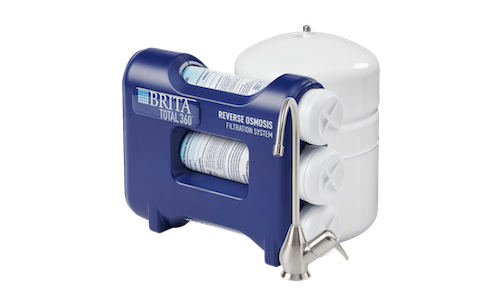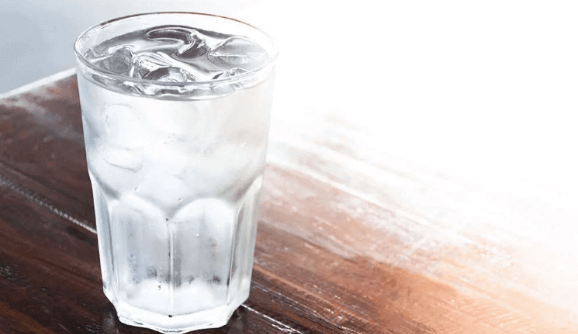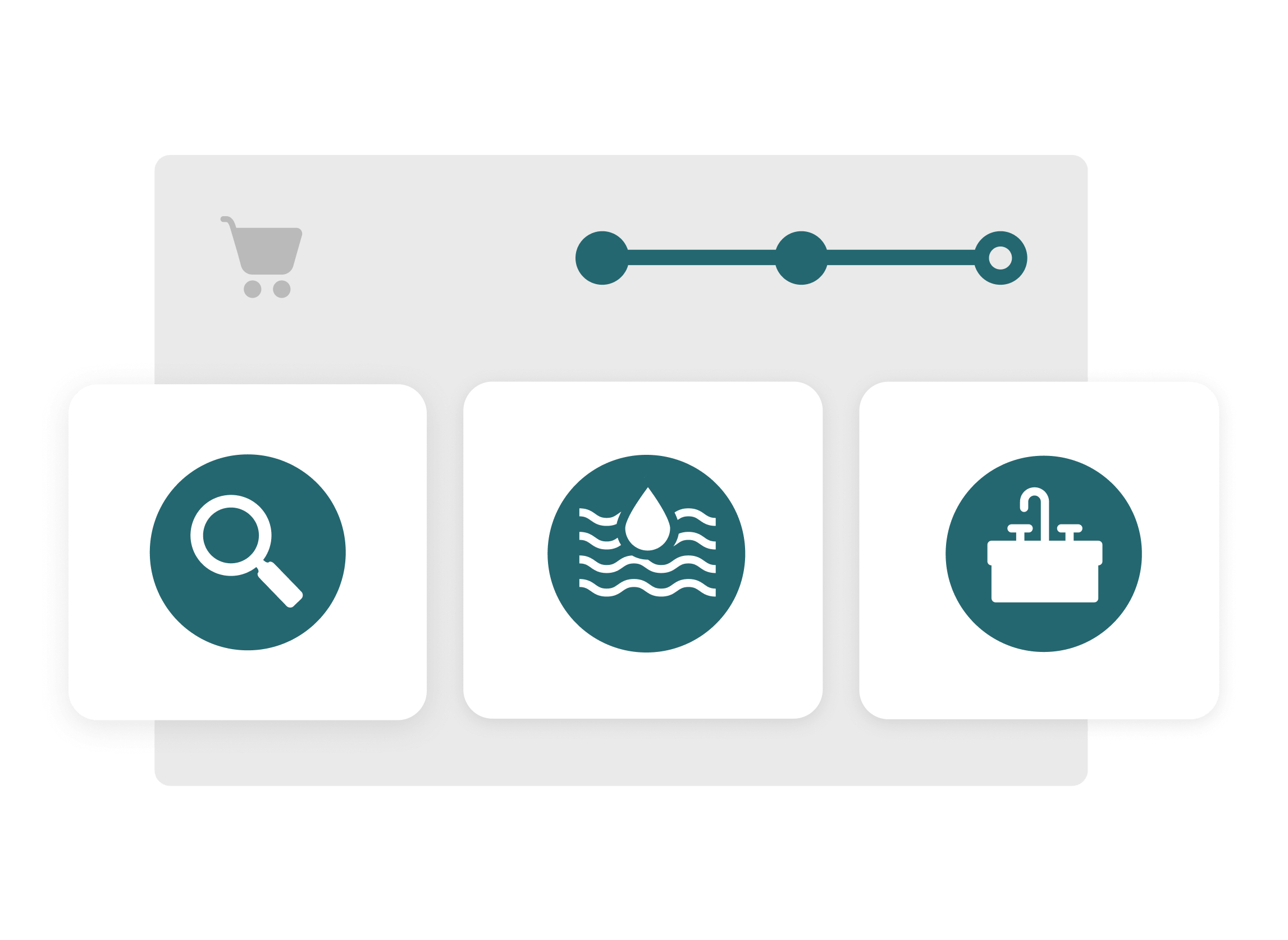A Comprehensive Guide to Common Water Contaminants

Water is a vital resource. We need it for everyday use to keep us hydrated, clean and healthy. But depending on where you live, where your water comes from, and the activities happening around your water source (naturally occurring or not), your home water could contain harmful contaminants.
In the United States, municipal tap water must pass federal and state regulations before it enters homes and businesses. This is meant to help standardize expectations from the public and limit the amount of common water contaminants that are deemed acceptable by public health authorities. These standards set by regulators change frequently based on testing and research, and vary according to location.
When a municipality passes government-regulated tests, it doesn’t mean the water is contaminant-free. Instead, it means that the level of contaminants in the water are at or below the government-set standards. Keep in mind that these standards may be different than your own, and additional home filtration solutions are available to protect your water quality. This is especially important because when water travels from municipalities into homes, it can pick up contaminants along the way. It can take years for some water contaminants to cause noticeable health problems, making it difficult for individuals to notice what pollutants may be in their home’s water supply without testing.
Check with your local municipality to understand how your water is treated and tested. Regardless of where you live in the United States, the Environmental Protection Agency (EPA) requires municipalities to publish and distribute an annual Consumer Confidence Report (CCR) that shares where your water comes from and what’s in it.
Unlike municipal water users, homeowners with private wells are responsible for monitoring their home water quality. Knowing the types of naturally occurring and human activities taking place near your residence will help you be aware of the types of contaminants you could find in your water. Wells should be tested at least once per year, and this should be done by a laboratory certified in your state or territory for drinking water testing.
Common water contaminants include lead, chlorine, iron, arsenic, hydrogen sulfide, nitrate, bacteria and viruses, pharmaceuticals, PFAS and chloride. Use the guide below to gain a better understanding of what may cause these contaminants to impact home water, what the health concerns are and what can be done to reduce them.
Reduce the contaminants in your water.
Feel good about drinking the water that comes from your tap. See how an under sink filtration system can provide you with better-quality, great-tasting water.
Shop Now
Lead
Lead is a toxic metal that is dangerous to consume. It is a contaminant you cannot see, taste or smell. Fetuses, infants and young children are particularly vulnerable to lead poisoning.
What Causes It?
Unlike many other types of common water contaminants, lead typically enters the water supply after it leaves the water treatment plant if lead plumbing materials are being used.
Homes and municipal service lines constructed prior to the 1930s are often the culprits of lead problems, as many of them still have lead pipes or solder (which was used until 1976). However, this does not mean newer homes are immune to lead contamination—even brand new homes are susceptible to lead problems if they are built and connected to municipal water lines that still contain lead. Service lines using brass materials may also have lead in them.
Unfortunately, fixtures with any lead content can lead to water contamination. But there is good news: EPA rules are being put into effect so that by 2024 lead should become less of a water contaminant problem nationwide. NSF-certified systems will require evaluation and testing to make sure water systems meet updated regulations.
Health Impact
The impact of lead poisoning varies greatly depending on exposure levels, a person’s health and age. The symptoms listed below can affect anyone, but infants and young children are especially susceptible to problems with lead poisoning as it can cause irreversible harm to their brains.
Symptoms from prolonged lead exposure may include:
- Abdominal pain
- Constipation
- Nausea
- Trouble sleeping
- Irritability
Prolonged exposure may also lead to heart or kidney disease, reduced fertility, high blood pressure and heart disease.
How to avoid it
Many water municipalities will test your water for lead for free or you can have your water tested through a certified lab. Also, replacing lead materials with safer alternatives can significantly reduce lead levels in water. Because this isn’t always feasible, however, utilizing a water treatment system may be the best course of action to reduce the amount of lead contamination or provide protection in the event of any future contamination. Drinking water filtration systems, including reverse osmosis (RO) systems, can help reduce lead levels in your home’s water supply.
Check lead levels in your area with this helpful tool.
The interactive tap water quality map identifies your local lead contamination levels.
Lead Mapping Tool
Chlorine
Chlorine is best known as the chemical used to disinfect swimming pools that has a distinct odor. Most municipalities use chlorine in the public water supply to kill harmful microorganisms that may be present. While chlorine can reduce the risk of disease-causing germs, such as Salmonella and norovirus, ingesting too much of it can also lead to health problems.
What causes it?
Chlorine, a proven disinfectant that’s been widely used for more than a century, is intentionally added to the water supply by the vast majority of public municipalities in the United States. Homes on private well water are less likely to have chlorine disinfectant in their water as the homeowner is responsible for monitoring and treating their own water supply.
Health Impact
According to the Centers for Disease Control (CDC) and EPA, chlorine levels of up to 4 parts per million (ppm) are safe for humans to ingest. Chlorine is not known to create widespread health problems when consumed at or below the 4 ppm threshold. However, it dries out your skin and hair.
Many people don’t like the smell and taste of chlorine, which is a primary reason why people with municipal water supplies choose to remove it.
How to avoid it
If you live in a home with chlorinated water, the most effective way to reduce the amount of chlorine in your water supply is with carbon filtration. Carbon filters are effective at adsorbing and reducing common water contaminants, including chlorine taste and odor, from water. Installing a whole home or under sink system designed to reduce chlorine taste and odor can go a long way in removing that unpleasant smell from your water supply.
Iron
Iron is a common water contaminant and a natural element that tastes metallic and leaves stains on surfaces. There are multiple types of iron that can contaminate water, with red water (ferric) and clear water (ferrous) iron being the most common. Red water iron appears a cloudy, reddish-orange color as it comes out of the tap, while clear water iron looks clear out of the tap, but leaves brown or red stains as it oxidizes on surfaces. The EPA provides recommendations to municipalities regarding iron concentration in water, but there are no enforceable regulations.
What causes it?
Iron is most common in well water sources, such as private wells. It’s naturally occurring in the soil and through the hydrological cycle it ends up in the water supply.
Another contributor to iron in tap water is corroding pipes. Over time, pipes and tanks corrode and subsequently show signs of rust. As plumbing infrastructure deteriorates over time, the pipes may flake bits of iron content into passing water.
Health Impact
So, is iron in water bad? Compared to many other common water contaminants, iron is a secondary water contaminant that does not threaten health, according to the EPA. However, the stains left behind by iron are one of the most common factors people consider when deciding whether to invest in a filtration system. Additionally, the metallic taste of iron in the water is another common reason homeowners choose to remove it.
How to avoid it
The most effective way to reduce iron in your home water is by installing a water softener or an iron filter. An iron filter will reduce both red water and clear water iron from your water, while water softeners are great at reducing clear water iron. You’ll want to have your water tested to determine which type of iron you have, along with any other water quality issues you need to correct, prior to purchasing a system. If you want a total iron treatment solution, having both a water softener and iron filter will provide impactful results. Using a hybrid softener/filtration system is not recommended for homes with high levels of iron.
Arsenic
Arsenic is a naturally occurring chemical that is notoriously toxic, which is why the federally regulated limit for the substance in tap water is a mere 10 parts per billion (ppb), the equivalent to about 10 drops of water in a swimming pool. It doesn’t take much arsenic to cause health issues, making it critical to remove as much of the chemical from your water supply as possible before use.
What causes it?
Arsenic can come from rocks, soil, plants, animals, water and air. In the United States, arsenic tends to be more of a problem in rural communities that do not use municipal water. Groundwater often contains some arsenic, so you should be aware of the substance if your home’s water is coming from a groundwater source such as a well. You can use the EPA’s drinking water mapping application to find the source of your local tap water.
Health Impact
Long-term consumption of arsenic in water can cause a wide range of health issues. In humans, arsenic in drinking water has been linked to:
- Skin discoloration and rashes
- Heart, lung, nervous and reproductive system problems
- Nausea, vomiting and diarrhea
- Shortage of red and white blood cells
- Lung and kidney cancer
How to avoid it
If you’re wondering how to remove arsenic from water at home, reverse osmosis (RO) systems are highly effective for reducing the contaminant from your drinking water. Whole home arsenic removal systems are also an option to filter the contaminant for your entire home. Homes on private wells should test their water on a recurring basis to ensure the problem is controlled.
Hyfrogen Sulfide

Hydrogen sulfide is a colorless chemical compound that is extremely dangerous in its gaseous state. In water, hydrogen sulfide poses less risk, but getting rid of it should be a priority.
What causes it?
How can you tell if your water is contaminated with hydrogen sulfide? This is primarily a private well issue, and the scent of your water should clue you in. If your water smells like rotten eggs, it may contain sulfur bacteria. That distinctive scent is hydrogen sulfide, the gas that certain sulfur bacteria produce in and around groundwater. In a large enough quantity, it may be corrosive, tarnishing copper and silverware, or produce yellow or black stains on fixtures.
Health impact
While small amounts of hydrogen sulfide in tap water don’t pose an immediate health risk, many people decide to reduce it from their water due to its unpleasant taste and smell. The presence of hydrogen sulfide gas could also indicate other types of contamination, such as sewage in the groundwater. Toxic substances such as coliform bacteria or nitrate may exist alongside the gas, and it’s important to take steps to remove them.
How to avoid it
It’s necessary to get your water professionally tested if you suspect hydrogen sulfide in the water. If the smell is coming from just the hot water, this is an indication that your water heater needs to be looked at. Replacing the magnesium anode rod in the water heater may be able to cut the production of hydrogen sulfide gas at the source.
Getting rid of hydrogen sulfide in water can also be accomplished by installing an iron filter. Iron filters are effective at reducing hydrogen sulfide, as well as red water and clear water iron, and some manganese. These systems will reduce the unpleasant smell, taste and risks associated with the contaminant.
Nitrate
While plants rely on nitrate to stay alive, it poses a significant risk to humans. Rural private well water is especially susceptible to nitrate contamination because it may be exposed to soil with this contaminant. If you source your water from a private well or live in a rural area, take some time to learn about the risks of this harmful substance.
What causes it?
Nitrate is colorless and odorless, but not harmless. While nitrate is a naturally occurring form of nitrogen, it’s used heavily in agriculture to assist with crop growth. For this reason, people who live in rural communities near farming should be mindful of nitrate levels in their drinking water.
Health impact
Infants are especially at risk for health problems associated with nitrate in water. This is because the substance can cause a fatal blood disorder known as methemoglobinemia or “blue baby” syndrome. When an infant consumes too much nitrate, their blood has more difficulty carrying oxygen throughout the body. Research indicates nitrate above 10 milligrams per liter (mg/L) can cause methemoglobinemia in kids less than six months old.
How to avoid it
You can reduce the amount of nitrate from your drinking water with a reverse osmosis system.
Bacteria and Viruses
There are many types of bacteria and viruses that are common in water, including cysts, rotavirus, norovirus, and hepatitis A and E. The types that carry diseases are known as pathogens, and although the EPA regulates levels of these health hazards, pathogens can enter a water supply after leaving a water treatment facility.
Municipalities are required to test and treat for bacteria and viruses, often using chlorine or chloramines to properly disinfect. Private wells are particularly at risk for these contaminants because they are not monitored by the EPA, and the homeowner is responsible for testing and treatment.
What causes it?
There are many sources of viruses and bacteria in water. Some of the most common include:
- Sewage
- Animal waste
- Dead and decaying animals
These sources of microbes contaminate underground water supplies. In many cases, there are no clues or indicators that harmful viruses or bacteria are present in the water. Many people only learn that their water is contaminated after getting sick.
Health Impact
Drinking water contaminated with disease-causing bacteria and viruses can make you ill. Gastrointestinal illness symptoms may include diarrhea, vomiting and cramping. The elderly, young children, and people with weakened immune systems are more likely to get sick and experience severe symptoms.
If you suspect problems with bacteria or viruses in your drinking water, such as E. coli, your best course of action is to switch to another water source, such as bottled water, until you can identify the correct water treatment solution and have it installed.
How to avoid it
The most effective way to reduce viruses and bacteria in drinking water is with disinfectant water treatment systems. There are several treatment options available, including ozone, chlorine, chloramine and UV technology. Some filtration systems, such as water purifiers, can also be used to reduce dangerous pathogens found in drinking water. A water system that is tested and certified to the NSF/ANSI standard P231 will do the trick.
Pharmaceuticals
Pharmaceutical water pollution is a growing problem in the United States. Chemicals from prescription drugs, such as birth control, mood stabilizers and painkillers, have been found in many municipal water supplies. Since some water treatment facilities do not account for pharmaceutical contamination, it’s important to be aware of the potential presence of pharmaceuticals in your drinking water.
What causes it?
Traces of pharmaceuticals enter the water supply mostly due to bodily excretions. These compounds start in toilets and make their way to wastewater treatment plants, where they are not removed, and through the natural hydrological cycle end up in the water supply. While the amount of pharmaceutical compounds in tap water is much lower than you’d find in a prescription, the safest course of action is to remove them entirely.
Health impact
Exposure to pharmaceutical compounds can impact your health negatively. Even at low doses, some pharmaceutical chemicals can exert a range of adverse effects and cause unpredictable health outcomes. Endocrine disruptors are of particular concern since they disrupt many internal biological processes such as growth and development.
How to avoid it
The most effective way to reduce common pharmaceutical compounds from drinking water is through select drinking water filtration systems. You’ll want to scan the performance data on the system you are interested in, to ensure it’s reducing the contaminant(s) you are concerned about.
PFAS
Per- and polyfluoroalkyl substances (PFAS) are man-made substances dating back to the 1940s which are nearly indestructible, earning them the nickname “forever chemicals.” More than 4,700 chemicals are classified as PFAS, with perfluorooctanoic acid (PFOA) and perfluorooctane sulfonate (PFOS) getting the most attention from federal and state regulators.
PFAS are particularly dangerous because they have contaminated a lot of groundwater, are difficult to detect and do not degrade in the environment. It’s estimated that more than 200 million Americans have water that’s been contaminated by PFAS with a concentration of at least 1 ppt, which is significant since many scientific studies suggest a safe threshold for PFAS in drinking water is 1 ppt or less.
What causes it?
PFAS such as PFOA and PFOS were created for industrial applications, and they are commonly used in firefighting foam at airports, waterproof apparel, stain-resistant carpeting, food packaging materials and nonstick pans. PFOA and PFOS manufacturing has been phased out in the United States, but some stock may still exist, many foreign products still use them and hundreds of other PFAS chemicals are now being used in their place.
Health impact
Federal and state regulators disagree on how much PFAS contamination is safe for humans but they all seem to agree that at a certain point they are dangerous. The federal government is rolling out a PFAS Strategic Roadmap to help protect public health and begin curtailing the problem, but it’s still in its early stages.
PFAS exposure is linked to a variety of serious health problems which include:
- Increased cholesterol levels
- Testicular, kidney, liver and pancreatic cancer
- Decreased fertility or increased high blood pressure in pregnant women
- Birth defects
- Decreased vaccine response in youth
How to avoid it
The safest and most convenient way to reduce PFAS contamination from drinking water is with a reverse osmosis system that is NSF certified to reduce PFAS. The Brita Total 360 RO system, which can be installed under a kitchen or bathroom sink, is certified to reduce up to 97 percent of PFOA and PFOS.
Other drinking water and whole home filtration systems have been developed to target the reduction of PFAS in home water.
Chloride

A common anion in tap water, chloride typically combines with calcium, magnesium or sodium to create different types of salts. Chloride is naturally found in groundwater, but human impact has led to higher levels in certain areas. There are no federal regulations for chloride in drinking water, as small amounts have a negligible health impact.
What causes it?
Chloride makes its way into tap water from human or animal waste, road salt, seawater and oil drilling operations. If your home is near any of these sources, you may notice a slightly salty taste to your drinking water.
Health impact
In small quantities, chloride in water is relatively harmless. When chloride concentrations in water exceed 250 mg/L, however, people with existing heart conditions may experience complications, and consumption could lead to higher blood pressure.
How to avoid it
There are two main ways to reduce chloride from tap water: using a reverse osmosis system or a distiller.
Find Your Water Treatment Solution
There are many contaminants that can enter your drinking water, and some of them could make you sick. The most important step you can take to protect yourself from water contaminants is to have your water tested so you know which water treatment system will best solve your home water woes. Referencing the Environmental Working Group’s Tap Water Database is a good resource to find additional water contaminant information in your area. Once you know which contaminants you should reduce, there are a variety of water systems to choose from.
Find a filtration system fit for your home.
Answer a few questions about your home’s water to get a personalized recommendation for your unique water needs.
Interactive Shopping Guide